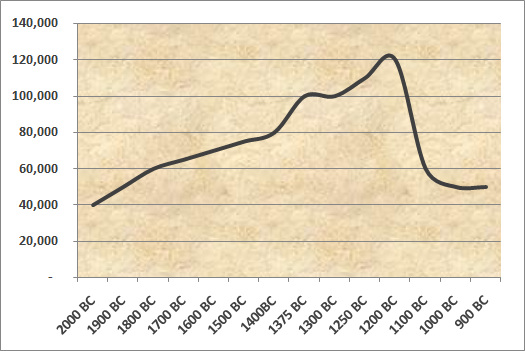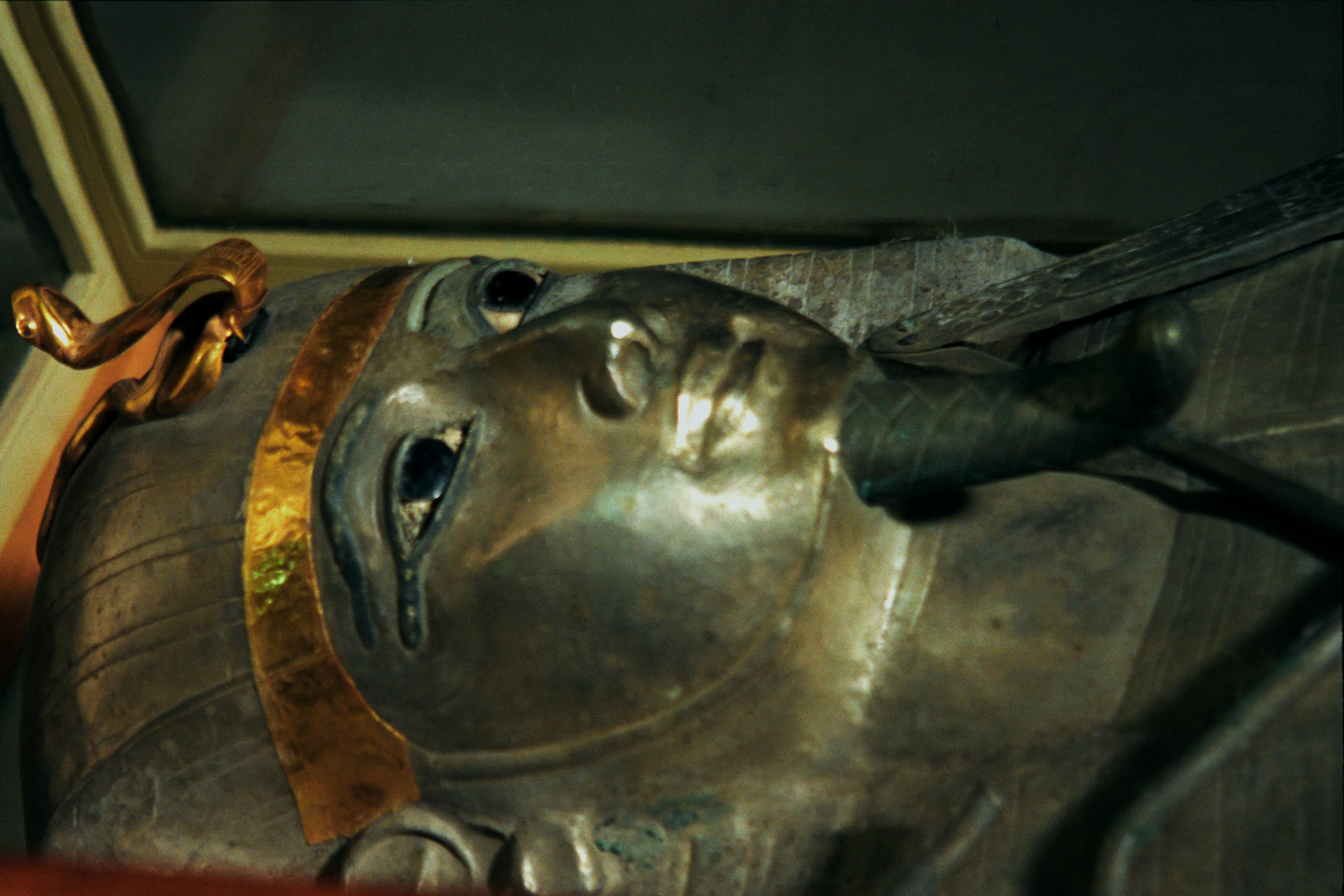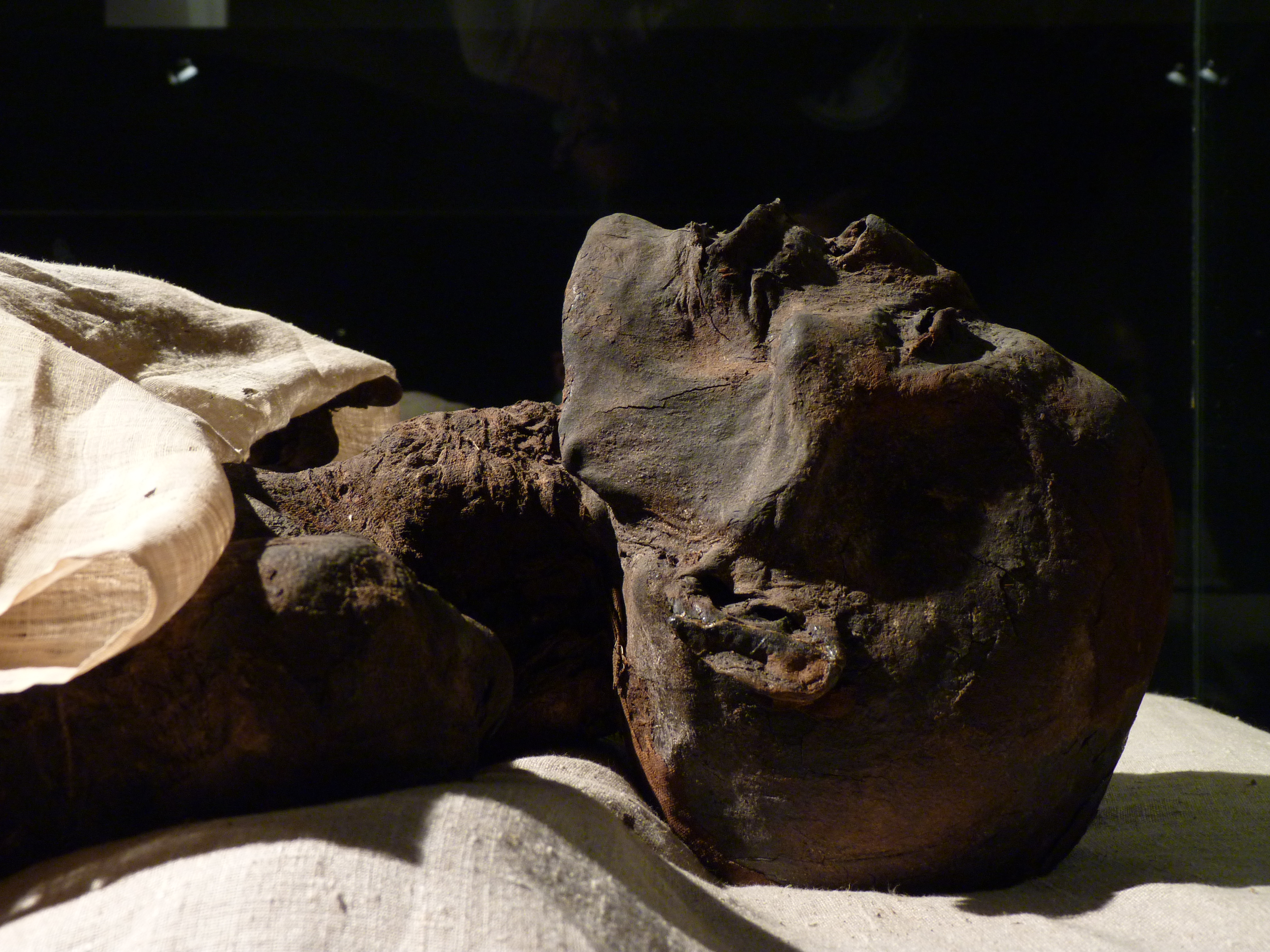|
Psusennes II
Titkheperure or Tyetkheperre Psusennes II [Greek language, Greek Ψουσέννης] or Hor-Pasebakhaenniut II [Egyptian language, Egyptian ''ḥr-p3-sb3-ḫˁỉ--nỉwt''], was the last Pharaoh, king of the Twenty-first Dynasty of Egypt. His royal name means "Image of the transformations of Re" in Egyptian. Psusennes II is often considered the same person as the High-Priest of Amun known as Psusennes III. The Egyptologist Karl Jansen-Winkeln notes that an important Graffito (archaeology), graffito from the Temple of Abydos contains the complete titles of a king ''Tyetkheperre Setepenre Pasebakhaenniut Meryamun'' "who is simultaneously called the HPA (i.e., High Priest of Amun) and supreme military commander." This suggests that Psusennes was both king at Tanis and the High Priest in Thebes at the same time, meaning he did not resign his office as High Priest of Amun during his reign. The few contemporary attestations from his reign include the aforementioned Graffito (archaeolo ... [...More Info...] [...Related Items...] OR: [Wikipedia] [Google] [Baidu] |
Thebes, Egypt
Thebes (, , ''Thēbai''), known to the ancient Egyptians as Waset, was an ancient Egyptian city located along the Nile about south of the Mediterranean. Its ruins lie within the modern Egyptian city of Luxor. Thebes was the main city of the fourth Upper Egyptian nome (Sceptre nome) and was the capital of Egypt for long periods during the Middle Kingdom and New Kingdom eras. It was close to Nubia and the Eastern Desert, with its valuable mineral resources and trade routes. It was a religious center and the most venerated city during many periods of ancient Egyptian history. The site of Thebes includes areas on both the eastern bank of the Nile, where the temples of Karnak and Luxor stand and where the city was situated; and the western bank, where a necropolis of large private and royal cemeteries and funerary complexes can be found. In 1979, the ruins of ancient Thebes were classified by UNESCO as a World Heritage Site. Toponymy The Egyptian name for Thebes was ''w� ... [...More Info...] [...Related Items...] OR: [Wikipedia] [Google] [Baidu] |
Ostracon
An ostracon (Greek language, Greek: ''ostrakon'', plural ''ostraka'') is a piece of pottery, usually broken off from a vase or other earthenware vessel. In an archaeology, archaeological or epigraphy, epigraphical context, ''ostraca'' refer to sherds or even small pieces of stone that have writing scratched into them. Usually these are considered to have been broken off before the writing was added; ancient people used the cheap, plentiful, and durable broken pieces of pottery around them as a convenient medium to write on for a wide variety of purposes, mostly very short inscriptions, but in some cases very long. Ostracism In Classical Athens, when the decision at hand was to banish or exile a certain member of society, citizen peers would cast their vote by writing the name of the person on the shard of pottery; the vote was counted and, if unfavorable, the person was exiled for a period of ten years from the city, thus giving rise to the term ''ostracism''. Broken pottery ... [...More Info...] [...Related Items...] OR: [Wikipedia] [Google] [Baidu] |
Jean Yoyotte
Jean Yoyotte (4 August 1927 – 1 July 2009) was a French Egyptologist, a professor of Egyptology at the Collège de France and director of research at the École pratique des hautes études (EPHE). Biography Born in 1927 at Lyon, Yoyotte attended the Lycée Henri-IV where he befriended Serge Sauneron who later became director of the Institut Français d'Archéologie Orientale (IFAO). Later he attended a course at the École du Louvre under the supervision of Jacques Vandier, and later studied at the EPHE. Around 1949, he conducted researches at the Centre national de la recherche scientifique, and in the interval 1952–56 he was in Cairo at the IFAO. In 1964 he became director of research for ancient Egyptian religion at the EPHE, where he was a student a few decades earlier. He participated with other colleagues committed to the left ( Elena Cassin, Maxime Rodinson, Maurice Godelier, Charles Malamoud, André-Georges Haudricourt, Jean-Paul Brisson, Jean Bottéro) in a Marx ... [...More Info...] [...Related Items...] OR: [Wikipedia] [Google] [Baidu] |
TT18
The Theban Tomb TT18 is located in Dra' Abu el-Naga', part of the Theban Necropolis, on the west bank of the Nile, opposite to Luxor. It is the burial place of the ancient Egyptian Baki (or perhaps ''Bak''), who was '' Chief Weigher of the Gold of Amun'' during the early Eighteenth Dynasty. Baki's father was a scribe of counting of cattle of Queen Ahmose Nefertari. The hall of the tomb is decorated with scenes showing a banquet and offering brought before Baki and his family. Other scenes show Baki and his family fishing and fowling.Porter and Moss, ''Topographical Bibliography: The Theban Necropolis'', p. 32 The tomb contains some graffiti that links Psusennes II's royal name with his successor, Shoshenq I. See also * List of Theban tombs The Theban Necropolis is located on the west bank of the Nile, opposite Luxor, in Egypt. As well as the more famous royal tombs located in the Valley of the Kings and the Valley of the Queens, there are numerous other tombs, more commonly ... [...More Info...] [...Related Items...] OR: [Wikipedia] [Google] [Baidu] |
Tell Basta
Bubastis (Bohairic Coptic: ''Poubasti''; Greek: ''Boubastis'' or ''Boubastos''), also known in Arabic as Tell-Basta or in Egyptian as Per-Bast, was an ancient Egyptian city. Bubastis is often identified with the biblical ''Pi-Beseth'' ( ''py-bst'', Ezekiel 30:17). It was the capital of its own nome, located along the River Nile in the Delta region of Lower Egypt, and notable as a center of worship for the feline goddess Bastet, and therefore the principal depository in Egypt of mummies of cats. Its ruins are located in the suburbs of the modern city of Zagazig. Etymology The name of Bubastis in Egyptian is ''Pr-Bȝst.t'', conventionally pronounced ''Per-Bast'' but its Earlier Egyptian pronunciation can be reconstructed as /ˈpaɾu-buˈʀistit/. It is a compound of Egyptian (“house") and the name of the goddess Bastet; thus the phrase means "House of Bast". In later forms of Egyptian, sound shifts had altered the pronunciation. In Bohairic Coptic, the name is rendered ... [...More Info...] [...Related Items...] OR: [Wikipedia] [Google] [Baidu] |
Thutmose III
Thutmose III (variously also spelt Tuthmosis or Thothmes), sometimes called Thutmose the Great, (1479–1425 BC) was the fifth pharaoh of the 18th Dynasty of Egypt. He is regarded as one of the greatest warriors, military commanders, and military strategists of all time; as Egypt's preeminent warrior pharaoh and conqueror; and as a dominant figure in the New Kingdom period. Officially, Thutmose III ruled Egypt from his coronation on 28 April 1479 BC at the age of two until his death on 11 March 1425 BC. But for the first 22 years of his reign, he was coregent with his stepmother and aunt, Hatshepsut, who was named the pharaoh.Partridge, R., 2002. Fighting Pharaohs: Weapons and warfare in ancient Egypt. Manchester: Peartree. pp. 202–203 He became sole ruler after Hatshepsut's death in 1458. Thutmose III conducted between 17 and 20 military campaigns, all victorious, which brought ancient Egypt's empire to its zenith. They are detailed in the inscriptions known as the Ann ... [...More Info...] [...Related Items...] OR: [Wikipedia] [Google] [Baidu] |
Osorkon I
Sekhemkheperre Osorkon I was an ancient Egyptian pharaoh of the 22nd Dynasty. Osorkon's territory included much of the Levant. The Osorkon Bust found at Byblos is one of the five Byblian royal inscriptions. Biography According to the stela of Pasenhor, Osorkon I was the son of Shoshenq I and his chief consort Karomama A, and the second king of ancient Egypt's 22nd Dynasty who ruled around 922 BC – 887 BC. He succeeded his father Shoshenq I, who probably died within a year of his successful 923 BC campaign against the Philistines and the kingdom of Kingdom of Israel (Samaria), Israel. Osorkon I's reign is known for many temple building projects and was a long and prosperous period of Egypt's history. His highest known date is a "Year 33" date found on the bandage of Nakhtefmut's mummy, which held a menat-tab necklace inscribed with Osorkon I's Nomen (Ancient Egypt), nomen and Prenomen (Ancient Egypt), prenomen: ''Osorkon Sekhemkheperre''. This date can only belong to Osorkon I s ... [...More Info...] [...Related Items...] OR: [Wikipedia] [Google] [Baidu] |
Great Royal Wife
Great Royal Wife, or alternatively, Chief King's Wife () is the title that was used to refer to the Queen consort, principal wife of the pharaoh of Ancient Egypt, who served many official functions. Description While most ancient Egyptians were monogamy, monogamous, a male pharaoh would have had other, lesser wives and concubines in addition to the Great Royal Wife. This arrangement would allow the pharaoh to enter into diplomatic marriages with the daughters of allies, as was the custom of ancient kings. In the past the order of succession in Ancient Egypt was thought to pass through the royal women. This theory, referred to as the Heiress Theory, has been rejected regarding the Eighteenth Dynasty ever since a 1980s study of its royalty.O'Connor and Cline (Editors), Amenhotep III: Perspectives on his reign, pg 6 The throne likely passed to the eldest living son of those pharaohs. The mother of the heir to the throne was not always the Great Royal Wife, but once a pharaoh was c ... [...More Info...] [...Related Items...] OR: [Wikipedia] [Google] [Baidu] |
High Priests Of Amun At Thebes
The High Priest of Amun or First Prophet of Amun (''wikt:ḥm#Egyptian, ḥm wikt:nṯr#Egyptian, nṯr wikt:tpj#Egyptian, tpj n wikt:jmn#Egyptian, jmn'') was the highest-ranking priest in the priesthood of the ancient Egyptian deities, ancient Egyptian god Amun. The first high priests of Amun appear in the New Kingdom of Egypt, at the beginning of the Eighteenth Dynasty of Egypt, Eighteenth Dynasty. History The priesthood of Amun rose in power during the early Eighteenth dynasty through significant tributes to the god Amun by rulers such as Hatshepsut and more importantly Thutmose III. The Amun priesthood in Thebes had four high-ranking priests: * The Chief Prophet of Amun at Karnak (''ḥm nṯr tpj n jmn''), also referred to as the Chief Priest of Amun. * The Second Prophet of Amun at Karnak (''ḥm nṯr snnw n jmn''), also referred to as the Second Priest of Amun. * The Third Prophet of Amun at Karnak (''ḥm nṯr ḫmtnw n jmn khemet-nu''), also referred to as the Third Pri ... [...More Info...] [...Related Items...] OR: [Wikipedia] [Google] [Baidu] |
Tanis, Egypt
Tanis ( ; ; ) or San al-Hagar (; ; ; or or ; ) is the Greek name for ancient Egyptian ''ḏꜥn.t'', an important archaeological site in the northeastern Nile Delta of Egypt, and the location of a city of the same name. Tanis was the capital of the Egyptian Kingdom in its 21st and 22nd Dynasties. It is located on the Tanitic branch of the Nile, which has long since silted up. History Tanis is unattested before the 19th Dynasty of Egypt, when it was the capital of the 14th nome of Lower Egypt. A temple inscription datable to the reign of Ramesses II mentions a "Field of Tanis", while the city ''in se'' is securely attested in two 20th Dynasty documents: the Onomasticon of Amenope and the Story of Wenamun, as the home place of the pharaoh-to-be Smendes. The earliest known Tanite buildings are datable to the 21st Dynasty. Although some monuments found at Tanis are datable earlier than the 21st Dynasty, most of these were in fact brought there from nearby cities, main ... [...More Info...] [...Related Items...] OR: [Wikipedia] [Google] [Baidu] |
Psusennes I
Psusennes I (; Greek Ψουσέννης) was the third pharaoh of the 21st Dynasty who ruled from Tanis between 1047 and 1001 BC. ''Psusennes'' is the Greek version of his original name Pasibkhanu or Pasebakhaenniut (in reconstructed Late Egyptian: /pəsiwʃeʕənneːʔə/), which means "The Star Appearing in the City" while his throne name, Akheperre Setepenamun, translates as "Great are the Manifestations of Ra, chosen of Amun." He was the son of Pinedjem I and Henuttawy, Ramesses XI's daughter by Tentamun. He married his sister Mutnedjmet. Psusennes's tomb, discovered in February 1940 by the French Egyptologist Pierre Montet, is notable for the condition in which it was found. All previously found pharaonic tombs had been graverobbed, including the tomb of Tutankhamun, and Psusennes's tomb was the only ancient Egyptian royal tomb discovered in fully intact condition. However, the humid climate of Lower Egypt meant only the metal objects had survived. Pharaoh Amenemope and ... [...More Info...] [...Related Items...] OR: [Wikipedia] [Google] [Baidu] |
Mummy
A mummy is a dead human or an animal whose soft tissues and Organ (biology), organs have been preserved by either intentional or accidental exposure to Chemical substance, chemicals, extreme cold, very low humidity, or lack of air, so that the recovered body does not Corpse decomposition, decay further if kept in cool and dry conditions. Some authorities restrict the use of the term to bodies deliberately embalming, embalmed with chemicals, but the use of the word to cover accidentally desiccation, desiccated bodies goes back to at least the early 17th century. Mummies of humans and animals have been found on every continent, both as a result of natural preservation through unusual conditions, and as cultural artifacts. Over one million Animal mummy, animal mummies have been found in Egypt, many of which are cats. Many of the Egyptian animal mummies are African sacred ibis, sacred ibis, and radiocarbon dating suggests the Egyptian ibis mummies that have been analyzed were from ... [...More Info...] [...Related Items...] OR: [Wikipedia] [Google] [Baidu] |








